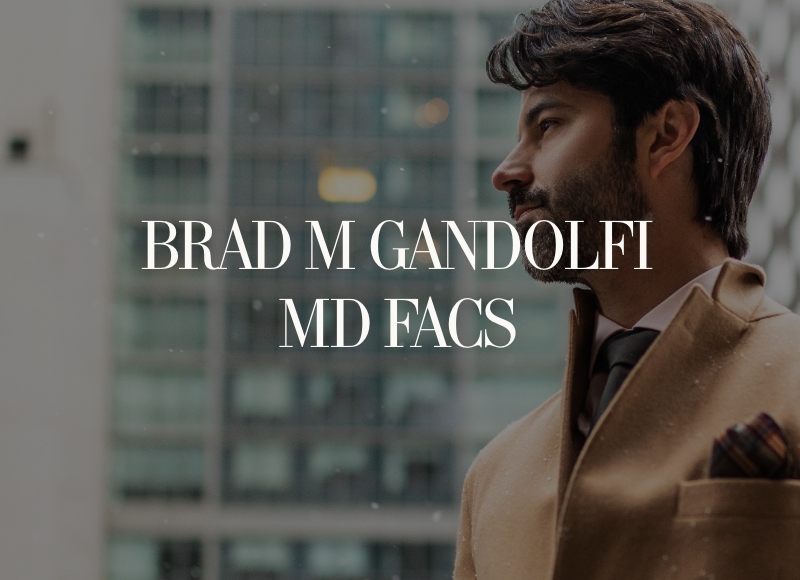When considering nasal surgery, patients have the options of a septoplasty vs. rhinoplasty. Both procedures involve changes to the nose, but they serve different purposes. This article compares these surgeries, helping you determine which one is the best fit for your personal needs.
What is Septoplasty?
Septoplasty is a surgical procedure focused on correcting the internal structure of the nose, particularly the nasal septum. The nasal septum is the wall dividing the two nostrils, and a deviated septum occurs when this wall is displaced to one side. A deviated septum can lead to breathing problems, congestion, and frequent sinus infections.
The main goal of septoplasty procedure is to improve airflow by straightening the septum, allowing the patient to breathe more easily. This procedure does not alter the external appearance of the nose, which distinguishes it from rhinoplasty. It is often recommended for individuals who suffer from chronic breathing issues rather than those seeking cosmetic changes.
What is Rhinoplasty?
Rhinoplasty, also known as a nose job, is designed to reshape the external appearance of the nose. This surgery addresses cosmetic concerns such as a hump on the bridge, asymmetry, or size issues that patients find undesirable. Rhinoplasty can enhance facial harmony and improve a person’s overall appearance.
In addition to its cosmetic applications, rhinoplasty can also be functional. Some patients undergo the procedure to correct structural issues that impact breathing, but the focus remains on improving the nose’s external shape. Unlike septoplasty, rhinoplasty is more often sought for aesthetic reasons.
Purpose of Septoplasty: Breathing Improvement
The primary purpose of septoplasty is to improve nasal function. People with a deviated septum often find it difficult to breathe through one or both nostrils, which may lead to snoring or disrupted sleep. This surgery corrects the underlying issue without changing the nose’s outward appearance.
Septoplasty is a functional procedure aimed at restoring the natural balance of airflow. If you are not concerned with the look of your nose and only wish to address breathing problems, septoplasty may be the right option.
Purpose of Rhinoplasty: Cosmetic and Functional Goals
Rhinoplasty has both cosmetic and functional goals, depending on the patient’s needs. While many undergo rhinoplasty to enhance the appearance of their nose, others choose the procedure for both aesthetic and functional improvements. For instance, a patient may want to reduce the size of their nose while also addressing structural issues that affect breathing.
Rhinoplasty offers the versatility of addressing both concerns, making it a more comprehensive option for those who seek both functional and cosmetic changes. However, it is important to understand that the recovery process for rhinoplasty may involve more discomfort and longer healing times compared to septoplasty.
Surgical Process: Septoplasty
Septoplasty is performed under local or general anesthesia and typically takes about 60 to 90 minutes. During the procedure, the surgeon makes an incision inside the nostrils, allowing access to the septum. The cartilage and bone are then repositioned or removed to correct the deviation.
Because the incisions are made internally, there are no visible scars after surgery. Most patients can return home the same day, with a recovery period of about one to two weeks. During recovery, swelling and mild discomfort are expected, but these symptoms usually subside quickly.
Surgical Process: Rhinoplasty
Rhinoplasty is a more complex procedure, especially when both cosmetic and functional issues are addressed. It can be performed using an open or closed technique. In open rhinoplasty, the surgeon makes an incision across the columella, the tissue between the nostrils, which provides better access for significant reshaping. In closed rhinoplasty, all incisions are made within the nostrils, leaving no visible scars.
The surgery can last between one to three hours, depending on the complexity of the changes. Swelling and bruising are common after rhinoplasty, and the full results may take several months to appear. While patients can often return to work within two weeks, complete recovery may take longer.
Recovery Time and Post-Operative Care for Septoplasty
Recovery from septoplasty is generally faster and less invasive compared to rhinoplasty. Patients can expect mild swelling and congestion for a few days following the procedure. Nasal splints or packing may be used to support the septum as it heals, and these are usually removed after a week.
Most people can return to their normal activities within a week, though strenuous exercise should be avoided for two weeks. Post-operative care includes using saline sprays to keep the nasal passages moist and preventing infections.
Recovery Time and Post-Operative Care for Rhinoplasty
Rhinoplasty recovery is more intensive, particularly if the surgery involved significant reshaping of the nose. Bruising and swelling around the eyes and nose are common and may take several weeks to subside. Patients are advised to avoid physical activities that could impact the nose, such as contact sports, for at least six weeks.
To aid recovery, patients are often required to wear a nasal splint for the first week. Ice packs can help reduce swelling, and sleeping with the head elevated minimizes discomfort. While patients may notice an improvement in appearance after two weeks, it can take up to a year for the final results to fully emerge.
Ideal Candidates for Septoplasty
Ideal candidates for septoplasty are individuals suffering from a deviated septum or nasal obstruction that affects their ability to breathe. This procedure is recommended for those who experience frequent nasal congestion, recurrent sinus infections, or other breathing-related issues.
Septoplasty is often suggested by an ENT specialist or facial plastic surgeon after less invasive treatments, such as medication, have proven ineffective. Candidates for septoplasty are generally not seeking changes in their nose’s appearance, as this surgery does not alter the external structure.
Ideal Candidates for Rhinoplasty
Rhinoplasty candidates often seek both cosmetic and functional improvements. Whether addressing a bump on the nose, nasal asymmetry, or breathing difficulties, rhinoplasty provides a comprehensive solution. Candidates should have realistic expectations about the outcome and be in good general health.
Rhinoplasty is suitable for individuals unhappy with the size, shape, or proportions of their nose. It is important to discuss your goals with your surgeon in order to make sure they align with what can realistically be achieved through the surgery.
Cost Considerations for Septoplasty
Septoplasty is often considered a medically necessary procedure, which means it may be covered by insurance. If the surgery is recommended to improve nasal function and alleviate breathing difficulties, many insurance providers will cover part or all of the cost.
The overall cost of septoplasty will vary depending on the surgeon’s experience, location, and the complexity of the procedure. Patients should consult with their insurance provider to understand what is covered and what costs they may need to pay out of pocket.
Cost Considerations for Rhinoplasty
Rhinoplasty is generally classified as a cosmetic procedure and may not be covered by insurance unless there is a functional component. If you are seeking rhinoplasty for aesthetic reasons, you should be prepared to cover the costs independently.
The cost of rhinoplasty depends on several factors, including the surgeon’s expertise, the extent of the surgery, and the geographic location. Cosmetic rhinoplasty can be expensive, but many patients find it to be a worthwhile investment in improving their appearance and self-confidence.
Risks Associated with Septoplasty
Septoplasty is considered a low-risk procedure, but like any surgery, it carries potential risks. These may include bleeding, infection, and adverse reactions to anesthesia. Some patients may experience a change in nasal sensation or persistent nasal congestion following the procedure.
While complications are rare, it is important to follow all post-operative care instructions to minimize risks. Discuss any concerns with your surgeon before undergoing surgery.
Risks Associated with Rhinoplasty
Rhinoplasty also comes with risks, particularly when altering the structure of the nose. Potential complications include difficulty breathing through the nose, asymmetry, scarring, and dissatisfaction with the cosmetic result.
Working with an experienced and qualified surgeon significantly reduces the risks, but it is important to have realistic expectations about the outcome. Revision surgeries may be necessary in some cases to correct unsatisfactory results.
Combined Septoplasty and Rhinoplasty: Addressing Both Concerns
In some instances, patients may choose to undergo a combination of septoplasty and rhinoplasty, called septorhinoplasty. This approach allows surgeons to address both functional and aesthetic concerns simultaneously. Patients often benefit from fewer overall recovery periods, as both surgeries are completed in one session. For those dealing with both breathing difficulties and cosmetic dissatisfaction, septorhinoplasty offers a comprehensive solution without the need for multiple procedures.
This option tends to be more intricate, as it requires a delicate balance between reshaping the nose externally while improving internal function. The expertise of the surgeon is significant in such cases to avoid potential complications or unintended aesthetic results. The recovery period for septorhinoplasty is often slightly longer due to the combined nature of the surgery, though the advantages of resolving all concerns at once can outweigh this downside.
Septoplasty for Athletes and Active Individuals
For athletes and those who lead an active lifestyle, breathing is paramount to performance. Septoplasty can provide a significant improvement in airflow, which enhances overall stamina and energy levels during physical activities. Athletes who suffer from a deviated septum may notice that their breathing becomes labored during exercise or competition, which can negatively affect their performance.
Undergoing septoplasty can improve oxygen intake, allowing athletes to reach their full potential. Recovery is typically faster for individuals who maintain good physical health, enabling them to return to their routines without extended downtime.
Rhinoplasty and Facial Harmony
Rhinoplasty often does more than correct individual features; it contributes to overall facial harmony. Many patients find that adjusting the nose’s shape brings balance to the face, enhancing other features such as the eyes and chin.
Which Procedure is Right for You?
Choosing between septoplasty and rhinoplasty depends on your goals. If your primary concern is improving breathing due to a deviated septum, septoplasty may be the best option. For those looking to change the shape of their nose, rhinoplasty will better address those needs.
In some cases, patients opt for a combination of both procedures, known as septorhinoplasty. This allows for functional and aesthetic improvements in one surgery, but it also requires a more detailed recovery process.
Nose Surgery Tailored to Your Unique Needs
If you are considering septoplasty vs rhinoplasty, it is important to consult with a qualified surgeon like Dr. Gandolfi, in order to determine which procedure aligns with your needs. Both surgeries offer significant benefits, but understanding the differences will help you make an informed decision.
At my practice, I offer comprehensive facial plastic surgery services, including septoplasty and rhinoplasty. My team and I will work closely with you to create a personalized surgical plan that meets your functional and aesthetic goals.





